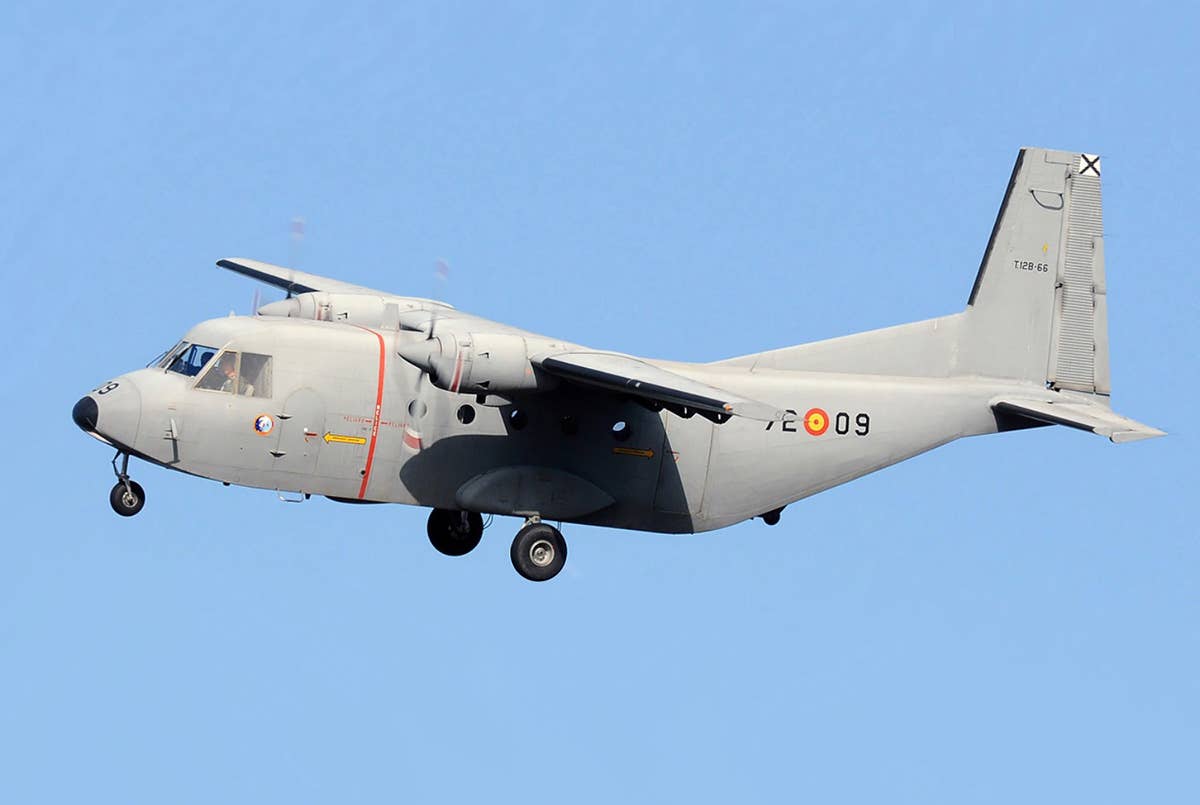NTSB’s Final Report Leaves Unanswered Questions in Copilot’s Fatal Fall
Investigators could not definitively determine whether copilot Charles Crooks fell or jumped to his death during the emergency landing of a CASA C-212 in July 2022.

The CASA 212 is a fixed-gear design with a ramp that lowers in the rear to allow for the egress of skydivers. [File Photo Courtesy: US Air Classics]
The National Transportation Safety Board (NTSB) could not definitively determine whether copilot Charles Crooks fell or jumped to his death during the emergency landing of a CASA C-212 in July 2022, per a newly released final report.
New details reveal the incident occurred during a skydiving operation at Raeford West Airport (NR20) in North Carolina. The pilots were on approach to pick up another group of skydivers with second in command (SIC) Crooks flying. According to the NTSB report, the approach was stable until the aircraft descended below the tree line and encountered wind shear. Crooks initiated a go-around, but before establishing a climb, the right main landing gear struck the runway surface and then detached.
The pilots then declared an emergency and requested to divert to a larger airport. The pilot in command (PIC) took over while Crooks communicated with ATC. According to the unnamed PIC, Crooks became visibly upset following the hard landing. He proceeded to open his side cockpit window and lower the ramp in the back of the aircraft, indicating he needed air. Crooks then apologized, left his seat, removed his headset, and ran out of the airplane via the aft ramp door.
According to the report, “although the PIC and operator reported that the SIC’s departure from the airplane was an intentional act, there was insufficient information to support that assertion.”
Federal investigators also noted that the PIC, who was flying with Crooks, served as the chief pilot for the operator, which could have contributed to his stress. Family members told investigators Crooks was “extremely happy” and “loved to fly,” noting that he was in “a fabulous state of mind” prior to the flight.
Ultimately, investigators listed the probable cause as “the airplane’s encounter with wind shear during landing, which resulted in a hard landing and separation of the right main landing gear, and the pilot’s subsequent decision to leave his seat in flight, which resulted in his fall from the airplane.”
Editor’s Note: This article first appeared on AVweb.

Sign-up for newsletters & special offers!
Get the latest FLYING stories & special offers delivered directly to your inbox






